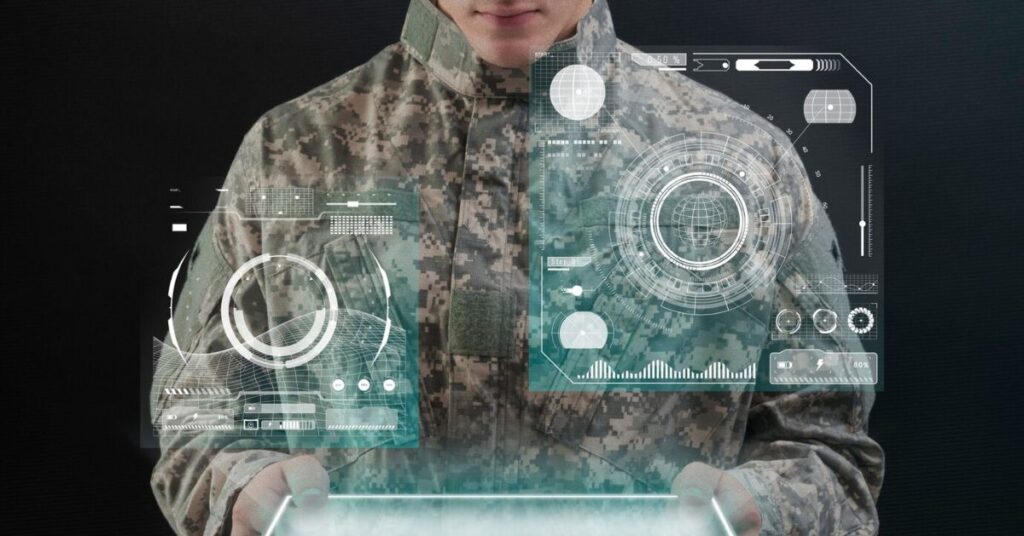Automatic License Plate Recognition (ALPR) technology is revolutionizing vehicle surveillance across the globe. By using optical character recognition to read vehicle license plates, ALPR systems help to automate various tasks that would otherwise require human intervention. This sophisticated technology has been integrated into numerous industries, enhancing security, improving traffic flow, and simplifying access control. In this article, we will delve into how widely used ALPR technology is, the role Artificial Intelligence (AI) plays in its development, and the various applications that contribute to road safety, parking management, and more.
Automatic License Plate Recognition technology automatically detects and reads vehicle license plates. It’s a powerful tool used for security, traffic management, and law enforcement.
What is Automatic License Plate Recognition (ALPR)?
Automatic License Plate Recognition (ALPR) refers to a technology that uses optical character recognition (OCR) to capture and interpret license plate data from vehicles. This process typically involves capturing images or video footage of vehicles passing through an area, analyzing the captured data, and extracting relevant information, such as the license plate number, vehicle type, and timestamp.
The technology uses cameras, computer vision, and machine learning algorithms to detect and recognize license plates. The collected data can then be processed for a range of purposes, such as tracking vehicle movements, enforcing parking regulations, or identifying stolen vehicles.
To learn more about the algorithms behind ALPR,
The Role of AI in ALPR Technology
Artificial Intelligence plays a critical role in the development and functionality of ALPR systems. Traditional ALPR systems rely on pre-programmed rules and simple pattern recognition to read license plates. However, modern ALPR systems incorporate machine learning algorithms and deep learning models, enabling the technology to continually improve over time.
Machine Learning and Data Training
AI-powered ALPR systems utilize machine learning to “train” the system to recognize a wide variety of license plates from different regions, countries, and fonts. The system processes large datasets of images, learning to distinguish license plates based on shape, color, and text patterns. As more data is processed, the accuracy of the system improves, allowing it to detect and read plates in various lighting conditions, angles, and weather situations.
Deep Learning for Advanced Recognition
Deep learning, a subset of AI, is especially powerful for ALPR systems that need to work in complex environments. These algorithms can process high-resolution images and recognize license plates even in difficult circumstances, such as when plates are partially obscured or the vehicle is moving at high speed. The deep learning models can learn from these variations and apply that knowledge to future readings, improving reliability.
Real-Time Processing
AI-powered ALPR systems can process license plate data in real time, enabling immediate responses. For example, if a vehicle’s license plate matches a “stolen vehicle” database, authorities can be alerted right away, allowing for rapid intervention. AI also helps in automatically classifying vehicles by type, size, and even make, which further aids in streamlining vehicle management processes.
How ALPR Technology is Used in Vehicle Surveillance
ALPR technology is becoming more widely adopted in various sectors, including law enforcement, transportation, and private enterprises. The applications of ALPR are vast, from tracking vehicles on roads to monitoring parking lots for unauthorized access. Here are some key ways ALPR is utilized:
1. Traffic Surveillance and Law Enforcement
One of the most well-known applications of ALPR technology is in traffic surveillance. Law enforcement agencies deploy ALPR cameras to monitor traffic, automatically identifying vehicles involved in crimes, such as stolen cars or vehicles with expired registrations. These cameras are often installed in strategic locations like highways, intersections, and toll booths.
Benefits:
- Stolen Vehicle Detection: ALPR systems can scan vehicles in real time and compare license plates against national and international databases of stolen vehicles. This helps law enforcement recover stolen vehicles quickly.
- Red Light and Speeding Violations: ALPR systems can be integrated with traffic enforcement to identify vehicles that run red lights or exceed speed limits, issuing fines automatically.
- Enhanced Public Safety: The use of ALPRs makes it easier to track criminal activities and provide valuable evidence in criminal investigations.
2. Parking Management
Parking facilities, both public and private, are increasingly adopting ALPR technology for monitoring and managing parking lots. The technology automates entry and exit systems, providing a more efficient and seamless experience for both customers and operators.
Benefits:
- Automated Payment Systems: ALPR systems can automatically capture license plates upon entry and exit, allowing for automated payment processing without the need for physical tickets or tokens.
- Access Control: In gated parking areas, ALPR technology ensures that only authorized vehicles can enter, reducing the risk of unauthorized parking.
- Better Space Utilization: By accurately tracking vehicle movements, ALPR systems can help manage parking space availability in real time.
3. Border and Gate Security
ALPR technology is also used for border control and in restricted access areas such as military bases or corporate facilities. In these scenarios, ALPR systems help to control who enters and exits the premises, often without the need for human personnel.
Benefits:
- Security at Sensitive Locations: By recognizing plates and comparing them with authorized vehicle lists, ALPR ensures that only approved vehicles can enter restricted areas.
- Efficient Operations: The automation of entry and exit tracking speeds up the process, reducing delays and improving overall security.
4. Fleet Management and Monitoring
ALPR systems are used by businesses to manage their fleets of vehicles more efficiently. By installing ALPR cameras in strategic locations, businesses can track vehicle locations, monitor driver behavior, and ensure timely deliveries.
Benefits:
- Route Optimization: Fleet managers can analyze vehicle routes and optimize them for fuel efficiency and time savings.
- Driver Behavior Monitoring: With ALPR systems, fleet managers can track driver habits such as speeding, helping them enforce safe driving practices.
- Asset Protection: The technology can also track the movement of valuable goods or vehicles, ensuring they aren’t stolen or diverted off course.
5. Tolling and Congestion Charging
Another common application for ALPR is in toll collection systems. ALPR cameras can automatically read the license plates of vehicles passing through toll booths, ensuring that tolls are paid accurately and quickly. This helps streamline road usage, reduce congestion, and enhance the overall driving experience.
Benefits:
- Contactless Payments: ALPR systems allow for a fully automated tolling system, where drivers can pay without stopping at a toll booth.
- Efficiency and Accuracy: The technology eliminates human errors in toll collection and reduces the chances of fraud.
6. Urban Planning and Traffic Management
ALPR technology is increasingly being used in urban planning and traffic management. By analyzing data collected from ALPR cameras, city planners can gain insights into traffic patterns, road usage, and congestion points.
Benefits:
- Traffic Flow Optimization: Analyzing vehicle movement data can help cities redesign roadways and intersections for better traffic flow.
- Environmental Impact Monitoring: By tracking vehicle types and emissions data, ALPR can assist in reducing environmental pollution in urban areas.
The Future of ALPR Technology
As ALPR technology continues to advance, the integration of AI, machine learning, and big data analytics will further improve its accuracy, speed, and versatility. More sectors are adopting ALPR systems to automate operations, improve security, and reduce costs.
Future developments may include:
- Improved Data Sharing Across Jurisdictions: As cities and countries adopt ALPR systems, data sharing between agencies will become easier, allowing for better cross-border surveillance and law enforcement.
- Enhanced Vehicle Identification Features: The future may see ALPR systems incorporating biometric data, facial recognition, and other identification methods to enhance vehicle and driver identification.
- Smarter Traffic Infrastructure: ALPR may play a key role in the development of smart cities, where traffic lights and road signs are dynamically controlled based on real-time vehicle data.
Conclusion
ALPR technology has transformed the way we monitor vehicles, with applications ranging from law enforcement to parking management and beyond. The integration of AI and machine learning into ALPR systems ensures their continued growth and effectiveness. As technology evolves, it is clear that ALPR will remain an essential tool in vehicle surveillance, enhancing security, streamlining processes, and improving the overall management of roads, cities, and parking lots.
To discover more about ALPR technology and its benefits, visit Sentiveillance’s Automatic License Plate Recognition Algorithm page, or explore Sentiveillance’s full suite of automated video systems.
Frequently Asked Questions (FAQs)
- What is Automatic License Plate Recognition (ALPR)? ALPR is a technology that uses optical character recognition (OCR) to read vehicle license plates automatically. It helps in capturing and processing vehicle data for various purposes, such as law enforcement, parking management, and traffic monitoring.
- How accurate is ALPR technology? ALPR technology is highly accurate, especially when integrated with AI and machine learning algorithms. The accuracy of recognition improves over time as the system learns from large datasets and adapts to different environmental conditions.
- Can ALPR be used in real-time? Yes, ALPR systems are capable of real-time processing. They can capture and analyze license plates as vehicles pass through, allowing for immediate responses, such as triggering an alert for a stolen vehicle or issuing a traffic violation fine.
- What are some industries that use ALPR technology? ALPR technology is used in various industries, including law enforcement, transportation, parking management, border control, tolling systems, and fleet management.
- Is ALPR technology secure and privacy-friendly? While ALPR technology offers enhanced security and surveillance, it must be used responsibly. Proper regulations and safeguards must be in place to protect individual privacy while balancing the benefits of surveillance.







